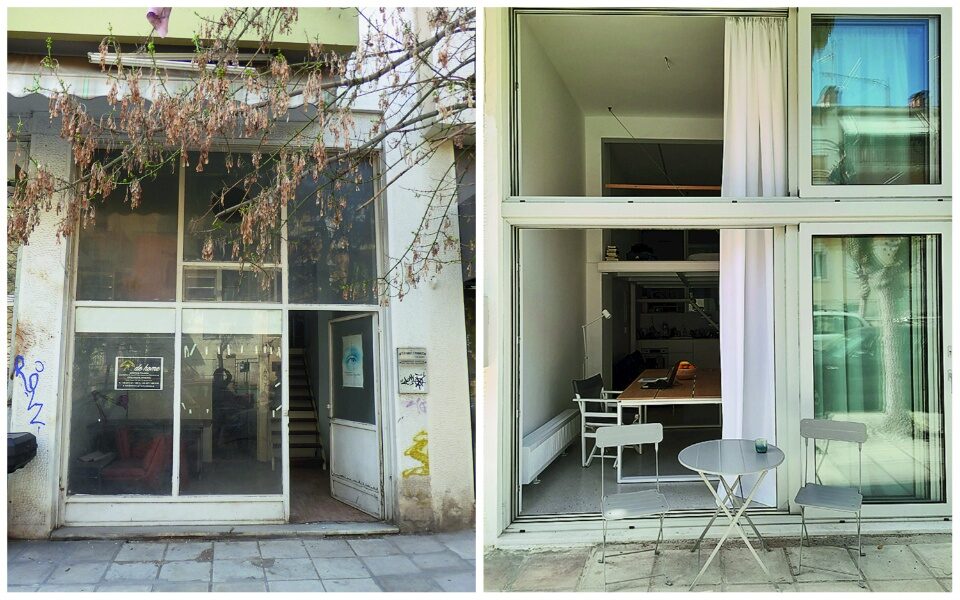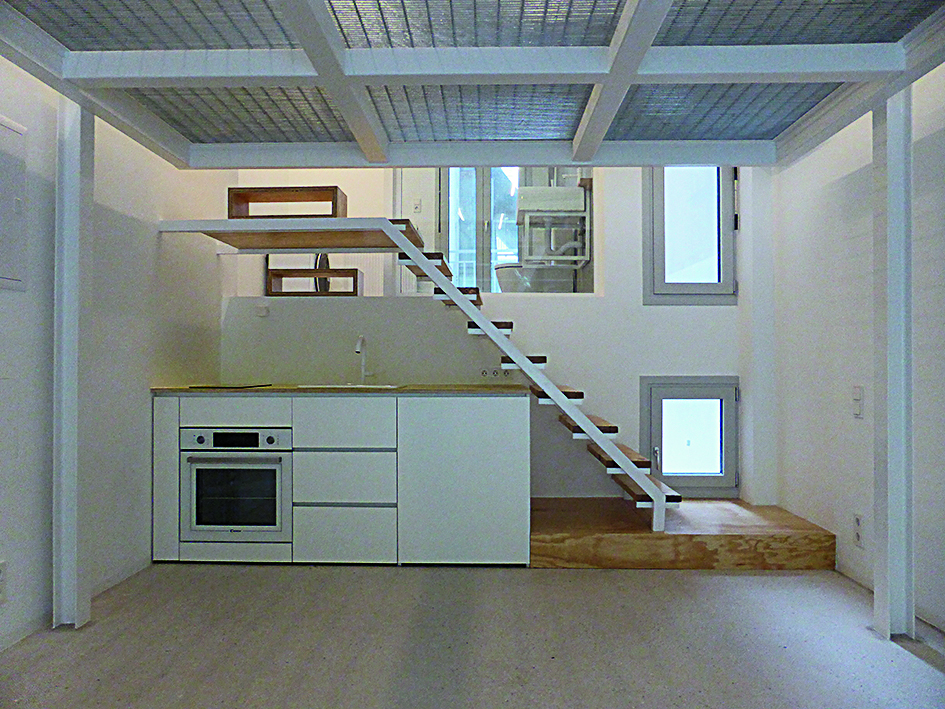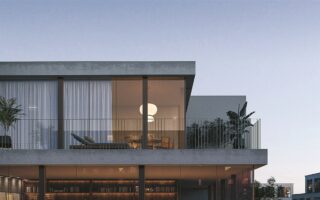Old retail stores being transformed into apartments
Shortages in the housing market are driving the trend of converting small business units

The search term is “ground-floor loft.” You can locate these distinctive living spaces on property websites such as Spitogatos. In the details box, you’ll typically find them described as fully renovated apartments ranging in area from 30 to 40 square meters. They often feature a layout with a living room and kitchenette combo at the entrance, the bathroom situated further inside, and the bedroom on a mezzanine level accessible via an internal staircase.
The wide-angle lens used in the ads usually disguises the fact that the central space can be somewhat narrow. Rarely is it mentioned that these apartments lack balconies and have direct access from the sidewalk. Not too long ago – or perhaps it’s been a while – these spaces used to house neighborhood businesses, such as a dressmaker’s, say, or a convenience store. These businesses were at the heart of most city neighborhoods for many years, but gradually, one after the other, they closed down.
The transformation of ground-floor shops into modern, and sometimes even luxurious, apartments is the latest trend in the real estate market across the country, particularly in the northern port city of Thessaloniki. Many of these completely renovated spaces are already available for sale or rent. While a few are intended for Airbnb-type rentals, most are designed to accommodate students, young couples or digital nomads. Architect and builder Paris Vasiliadis, for instance, designed a high-tech home in Thessaloniki for a computer programmer.
“The conversion of ground-floor spaces into living units has been ongoing for many years, starting when small neighborhood shops in cities began closing down, not just due to economic crises but also because these specific commercial activities gradually became obsolete,” he says. Many of these shops couldn’t compete with the rise of e-commerce. Interestingly, as Spiros Papadimitriou, an assistant professor in architectural digital design at the Architecture School of the Aristotle University of Thessaloniki, points out, although ground-floor spaces were historically quite expensive, their prices suddenly dropped sharply. “This prompted contractors to snap them up because they became very affordable,” he says. At the beginning, as Vasiliadis mentions, the conversions were basic and cheap, often without changing the intended use of the space. People would only inhabit these apartments out of necessity, and they retained the ambiance of a shop in terms of appearance and atmosphere. However, the landscape has now changed. “Nowadays, nobody chooses to live in such spaces out of necessity, but out of choice.” How did this shift occur?
‘While they may be narrow, their height prevents them from feeling claustrophobic’
The cost
On one hand, the astronomical prices of traditional properties have compelled builders to view these ground-floor spaces differently. Many of these spaces are readily available and affordable since they have often been vacant for extended periods and are in mediocre to poor condition. According to market trends, one can acquire such a ground-floor space for as little as 7,000 to 15,000 euros. However, the cost of renovation can be steep. It often surpasses 300-400 euros per square meter and can even soar to 700 euros per square meter, particularly when extensive repairs to common facilities are required (such as sidewalks, gas and water pipe relocations, sewage systems, water leak repairs, backyard cleanup and sanitation, among others). “These ground floors bear the weight of all construction mistakes,” notes Vasiliadis. The complexities associated with converting these spaces from shops to apartments have led owners to enlist architects, resulting in an enhanced final product. “For architects, it’s a challenge. You only need a small-scale permit, and you have an easily accessible construction site, without the need for disputes with neighbors.” After the reconstruction, the final selling price per square meter can reach 1,200 euros (equating to 48,000 euros for a 40-square meter apartment), while rental rates often exceed 350-400 euros.
Target audience
But who is the target audience for these ground-floor apartments? Existing conditions favor the growth of remote work. Especially following the Covid-19 pandemic, an increasing number of individuals have transitioned to working from home, abandoning traditional office positions, and opting for a nomadic lifestyle, seeking spaces that offer value for money. “These properties are often in much better condition than those on higher floors, even if they are situated on the ground floor,” explains architect-urban planner Evgenios Balasis, who has been exclusively involved in the purchase and conversion of ground floors since 2019. “With the funds you would spend on a furnished 50-square meter ground-floor apartment with new plumbing, electrical wiring and minimal maintenance costs (as tenants don’t have to pay communal fees), you could purchase a newly constructed apartment on a higher floor. Similarly, the 350-400 euros you pay for a renovated ground-floor apartment in the city center can secure you a cramped apartment on an upper floor.” According to Balasis, the distinction from traditional semi-basement apartments lies in the fact that ground-floor units boast high ceilings due to their former use as shops. “While they may be narrow, their height prevents them from feeling claustrophobic, lending them a loft-like ambience.”
Home and office integration
According to Vasiliadis, the concept of the home office has evolved significantly, blending the boundaries of home and office life. “However you look at it, meeting clients in such a space is a far more professional option than hosting them at your parents’ house! These apartments also provide independence, boasting their own entrances. They are favored by individuals with mobility challenges, those who commute by bicycle, and more. Tenants can maintain a degree of privacy without having to interact with neighbors if they so choose. We’re shifting away from necessity and creating a new urban typology. Neighborhoods once marred by shuttered, dimly lit shops are experiencing rejuvenation. In a sense, an oversight is being rectified. This wasn’t the case abroad; they always favored the ground floor. In Greece, everyone aimed for the first floor and above. The existence of such urban sanctuaries might foster a greater appreciation for public spaces.”
Papadimitriou, who has lived in a renovated ground-floor unit that used to be a shop in Thessaloniki’s Toumba neighborhood since November, shares his point of view. “I noticed that these ground floors were vacant, and transforming them into homes breathed new life into them,” he says. He even assigned a related project to his students. His own apartment is open, featuring a small uncovered balcony and abundant natural light (a rarity), with a relatively spacious sidewalk outside that allows him to set up a table for enjoying morning coffee while observing passers-by. “Connecting with the street redefines the ground floor, cultivating a unique relationship with public spaces. It’s quite intriguing. This is something you typically encounter on islands and in small towns but not as frequently in Athens and Thessaloniki.” He concedes that, in larger cities, noise levels can be higher, and regrettably, some individuals still neglect to clean up after their pets. “But they are gradually becoming more considerate.”
As he emphasizes, there are two conflicting viewpoints on this matter. “Some view this trend as a response to the problem of urban space abandonment, while others note that these homes may not receive adequate lighting and ventilation, even though the window size is suitable for the room.” What is certain is that through this real estate shift, one can gain insights into the city’s economic activity, its scars and its history.






